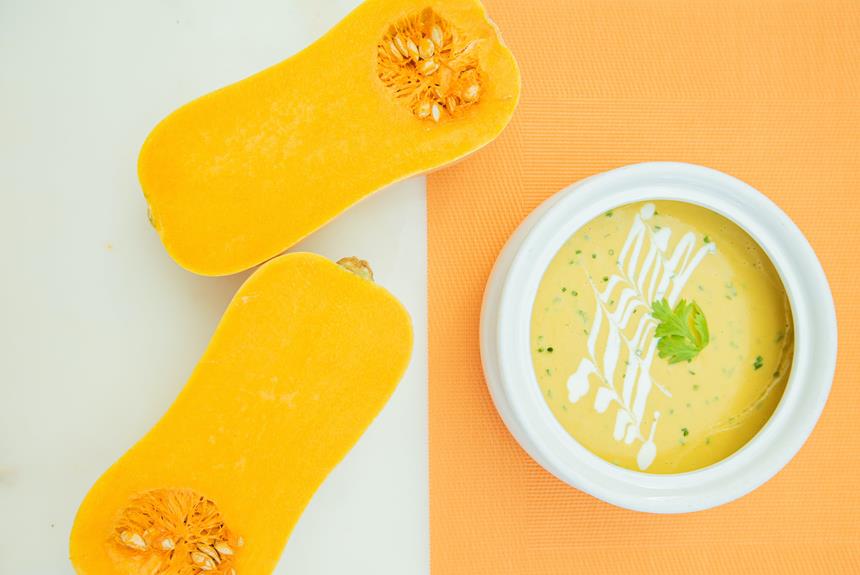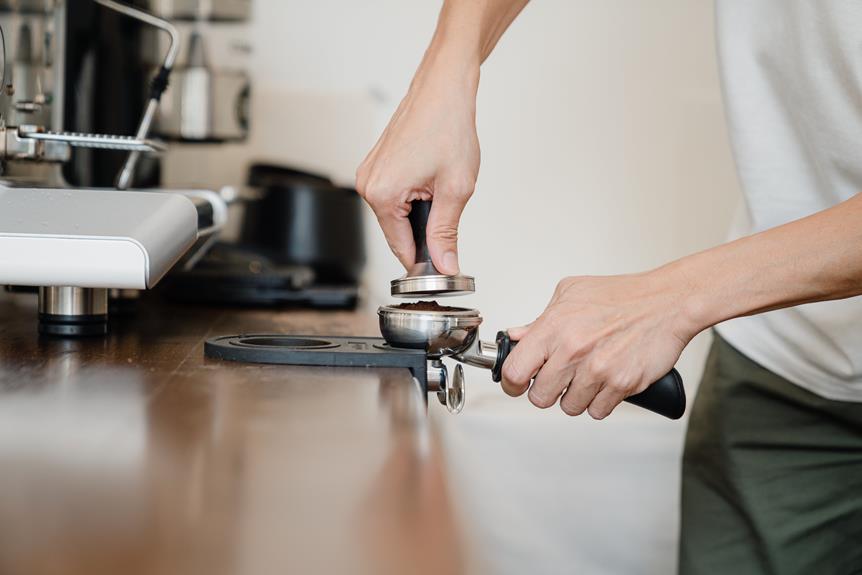Are you tired of spending precious time in the kitchen, meticulously chopping vegetables for your meals? Well, mastering the art of efficient vegetable slicing is the solution you've been looking for.
Some may argue that using a vegetable slicer is just an unnecessary gadget that takes up space in the kitchen, but let me assure you, it is a game-changer. In this discussion, we will explore the types of efficient vegetable slicers available, factors to consider when choosing one, proper techniques for using it, maintenance and care tips, and even some creative recipes that will make your taste buds dance with delight.
So, get ready to elevate your culinary skills and save time in the process.
Types of Efficient Vegetable Slicers
When it comes to efficiently slicing vegetables, there are several types of slicers that can make the task easier and quicker.
One of the most popular options is a mandoline slicer. With its sharp, adjustable blade, a mandoline slicer allows you to slice vegetables into uniform, thin slices with minimal effort. It's perfect for creating evenly sliced vegetables for salads or stir-fries.
Another type of efficient vegetable slicer is a spiralizer. This handy tool is great for making vegetable noodles or spirals. By simply inserting the vegetable and turning the handle, you can create long, curly strands of vegetables like zucchini or carrots. Spiralizers are perfect for those who want to incorporate more vegetables into their meals or for those who follow a low-carb or gluten-free diet.
A julienne slicer is another popular option. It's designed to create thin, matchstick-like strips of vegetables. This type of slicer is ideal for making stir-fries or adding a decorative touch to your dishes. With a julienne slicer, you can easily and quickly transform your vegetables into elegant and uniform strips.
Factors to Consider When Choosing a Vegetable Slicer
To choose the right vegetable slicer for your needs, consider these important factors.
First, think about the type of vegetables you'll be slicing most frequently. Some slicers are better suited for softer vegetables like tomatoes and cucumbers, while others are designed to handle harder vegetables like potatoes and carrots.
Next, consider the size and capacity of the slicer. If you often need to slice large quantities of vegetables, a slicer with a larger cutting surface and a higher capacity would be more efficient for you.
Additionally, take into account the blade options available with the slicer. Different blades can create different thicknesses and textures, so choose a slicer with blades that can accommodate your desired slicing style.
Another important factor to consider is the ease of cleaning and maintenance. Look for slicers that are dishwasher safe or have removable parts for easy cleaning.
Lastly, consider your budget. Vegetable slicers come in a wide range of prices, so it's important to find one that fits within your budget while still meeting your needs.
Proper Techniques for Using a Vegetable Slicer
If you have chosen the right vegetable slicer based on the factors discussed earlier, now it's time to learn the proper techniques for using it efficiently.
To start, ensure that the slicer is securely placed on a stable surface. This will prevent any accidents or injuries while slicing your vegetables.
Next, select the appropriate blade for the desired thickness of your slices. Most slicers come with adjustable blades, allowing you to customize the thickness according to your preference.
Once you have set the blade, firmly hold the vegetable with one hand and gently push it towards the blade using the other hand. Make sure to apply even pressure to achieve uniform slices.
It's essential to maintain a steady rhythm while slicing to avoid any jerky movements. Additionally, take breaks if needed to prevent fatigue and maintain accuracy.
Lastly, always remember to clean the vegetable slicer thoroughly after each use. This will prevent any buildup of residue and ensure the longevity of your slicer.
Maintenance and Care for Your Vegetable Slicer
Proper maintenance and care for your vegetable slicer is crucial to ensure its longevity and optimal performance. By following a few simple steps, you can keep your slicer in top shape for years to come.
First, always make sure to clean your vegetable slicer after each use. Use warm soapy water and a brush to remove any food particles or residue that may have accumulated. Pay special attention to the blade and the cutting surface, as these areas are prone to buildup.
Second, be sure to dry your slicer thoroughly after cleaning. Moisture can lead to rust and corrosion, which can damage the blades and affect the slicer's performance. Use a clean towel or air dry the slicer before storing it.
Third, it's important to sharpen the blade of your vegetable slicer regularly. Dull blades can cause uneven slicing and put unnecessary strain on the motor. Use a sharpening stone or a professional sharpening service to keep the blade sharp and efficient.
Lastly, store your vegetable slicer in a safe and dry place. Avoid exposing it to extreme temperatures or humidity, as this can damage the motor and other components.
Creative Recipes Using Vegetable Slicer
After properly maintaining and caring for your vegetable slicer, you can now explore a multitude of creative recipes using this versatile kitchen tool. The vegetable slicer opens up a world of possibilities for adding a touch of innovation and variety to your meals.
One creative recipe you can try is zucchini noodles, also known as 'zoodles.' Using the slicer, you can easily transform zucchinis into thin, noodle-like strips. These zoodles can be used as a healthy alternative to traditional pasta, and can be enjoyed with a variety of sauces or mixed with other vegetables for a refreshing salad.
Another exciting recipe you can make with your vegetable slicer is cucumber rolls. By slicing cucumbers lengthwise into thin sheets, you can create a base for flavorful fillings like cream cheese, smoked salmon, or avocado. Roll them up and secure with a toothpick for a delightful appetizer or snack.
If you're looking to add a twist to your salads, try using the vegetable slicer to create thin ribbons of carrots, beetroots, or radishes. These vibrant ribbons not only add a pop of color to your salad but also bring a unique texture and taste.
With your vegetable slicer, you can also experiment with making homemade vegetable chips. Slice potatoes, sweet potatoes, or even kale into thin, uniform slices and bake them until crispy. These homemade chips are a healthier alternative to store-bought snacks and can be seasoned to your liking.
Conclusion
In conclusion, mastering the art of efficient vegetable slicing is made easier with the right slicer and proper techniques. By considering factors such as blade type and size, safety features, and ease of cleaning, you can choose the best vegetable slicer for your needs.
Remember to follow proper techniques, such as using a firm grip and applying even pressure, to achieve consistent and precise slices. With regular maintenance and care, your vegetable slicer will continue to be a valuable tool in your kitchen.
Explore creative recipes to make the most out of your vegetable slicer and enjoy delicious and visually appealing dishes.





